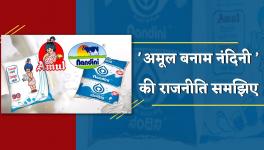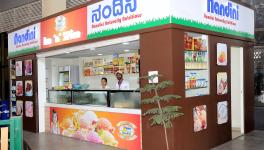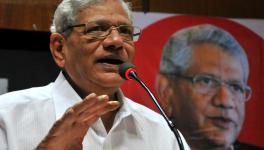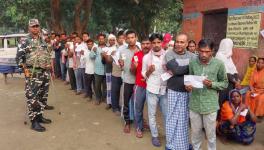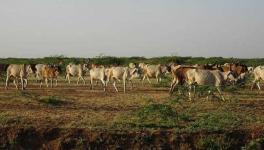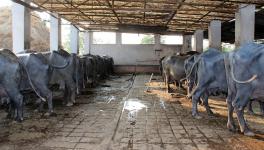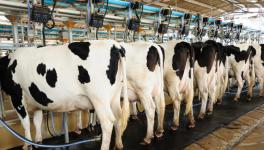As Global Milk Prices Crash, Indian Small Producers Face Ruin
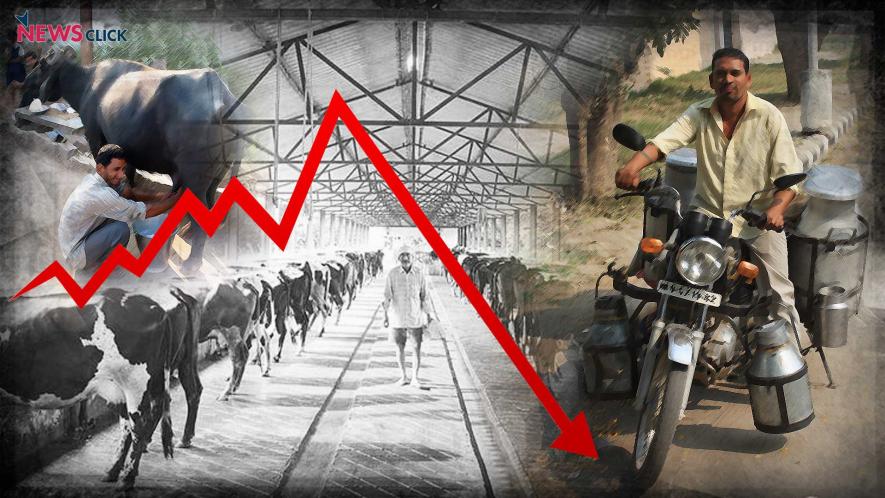
Newsclick Image by Nitesh Kumar
The backbone of the Indian milk market – dominated by small producers - is being broken by global forces, finds a new report by the Food Sovereignty Alliance of India.
Caught in the relentless ups and downs of the global dairy market, domestic dairy processors (corporations and cooperatives, increasingly going the corporate way) are being forced to compete with each other to sell milk at lower prices. This is pushing small-scale milk producers – small and marginal dairy farmers – out of the market.
The current crisis can be traced all the way back to India’s neoliberal policy restructuring beginning in the early 1990s, which resulted in the integration of Indian dairies into the global market.
But the trigger, says the report, was the slump in the global prices of skimmed milk powder (SMP) since January 2015. The price slump was a result of sharply falling imports of SMP by China and Russia.
This created a glut of SMP in the European Union (EU). And the EU responded by withdrawing its milk quotas (for regulating the production of milk) in April 2015, leading to overproduction, further lowering prices.
As a result, the Indian exports of SMP slumped from 1.3 lakh tonnes in 2013-14 to barely 30,000 tonnes in 2014-15. And prices too crashed. As of April 2015, private dairies were selling SMP at Rs. 180 per kg, as against Rs. 270 per kg in April 2014 – despite relatively high import tariffs (between 30% and 70%) on all dairy products.
Stuck with mounting domestic stocks of SMP, Indian dairy processors attempted to dispose these off as reconstituted liquid milk – by recombining it with butter fat – instead of buying fresh milk from farmers at fair prices. For example, Amul in 2015 announced its plan to dispose of the glut of SMP as recombined liquid milk.
This drove down the procurement price of milk from farmers.
Meanwhile, as the input costs for small dairy farmers rose due to drought and other reasons, the farmers were unable to cover even their cost of production. This has been pushing the small and marginal dairy farmers, who form “the backbone of the Indian milk market”, as the report says, out of production and into debt.
The dairy producers continue to receive no protection or support from the Indian government, unlike in the EU and the US. But the big corporations and cooperatives get an opportunity to expand their business.
The study provides evidence that the only solution is localised people’s milk markets – where procuring and selling happens locally – which are not affected by global market slowdowns. In fact, the more local the production and the market, the less it is affected by global developments.
These localised markets should are based on agro-ecological livestock cultures (where livestock are not reared as machines to produce single commodities, as in industrial farms, but in their multifaceted role as an important component in food farming and production).
The report found that organised dairy processors, procuring and selling locally, such as Vijaya Dairy in Telangana State and Vishakha Dairy in Vishakapatnam, Andhra Pradesh State, were less affected. Even more resilient were cooperatives procuring and selling locally, such as Kalahasthi Cooperative in Andhra Pradesh, as well as the “informal” peoples’ markets linking local producers to local consumers through small vendors, operating within a radius of 10-30 km.
Titled “The Milk Crisis in India: The story behind the numbers”, the report also makes several recommendations, including state protection and intervention by guaranteeing minimum procurement price of milk to farmers, regulation of sale price, financial support to farmers in distress, etc.
Get the latest reports & analysis with people's perspective on Protests, movements & deep analytical videos, discussions of the current affairs in your Telegram app. Subscribe to NewsClick's Telegram channel & get Real-Time updates on stories, as they get published on our website.










